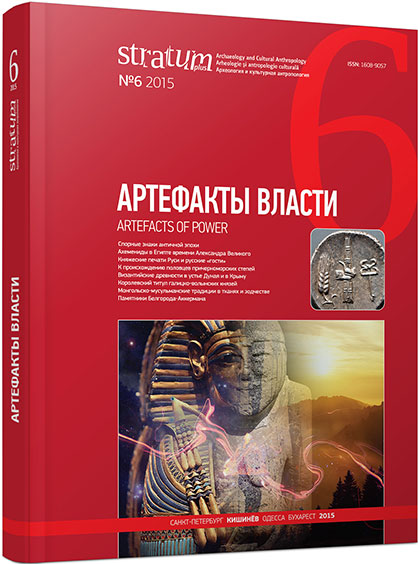Dynasteia sacrosancta. К вопросу о династической идентичности карийских Гекатомнидов
Dynasteia Sacrosancta. To Dynastic Identity of the Hecatomnids of Karia
Author(s): Nikolai JefremowSubject(s): History, Archaeology, Cultural history, History of ideas, Political history, Ancient World
Published by: Издательский дом Stratum, Университет «Высшая антропологическая школа»
Keywords: Karia; Hekatomnids; Achaemenids; legitimacy; hellenization; satrap; mausoleum; Labraunda
Summary/Abstract: What is important for domestic and foreign presentation of a local authority? This question is primarily connected with the problem of legitimacy and recognition of the elite. What possibilities were available to individual rulers and what instruments did they use to this end? Karian Hekatomnids are almost unanimously considered to be “enlightened” sovereigns and “precursors of Hellenism”. Greek architecture and language of inscriptions, coinage as well as elements of religious practice, afflux of intellectuals and artists and their participation in all domains of public life were typical for Karia of the time. On the other hand, there are numerous elements of indigenous Karian, Anatolian and even Persian culture, the fact that prompted many researchers to speak, not without a reason, about “Karization” and even cultural eclecticism — “Creolization”, along with “Hellenization”. At the same time, it is not sufficiently considered that we talk here, in fact, about interpraetaio graeca in relation to “Hekatomnid Renaissance”. Greek artists and architects, when commissioned, would execute the order, though in accordance with perceptions and wishes of the “client”, but anyway in conformity with their own abilities, inclinations and canons. The same also applies to the characteristics of the dynasty in the inscriptions and the narrative, which is operated in these (exclusively Greek) sources, with the usual categories for them. While such terms as “dynasty”, “tyrant”, “satrap”, “king” reflect the diversity of Hekatomnid regime.
Journal: Stratum plus. Археология и культурная антропология
- Issue Year: 2015
- Issue No: 6
- Page Range: 17-41
- Page Count: 25
- Language: Russian
- Content File-PDF

